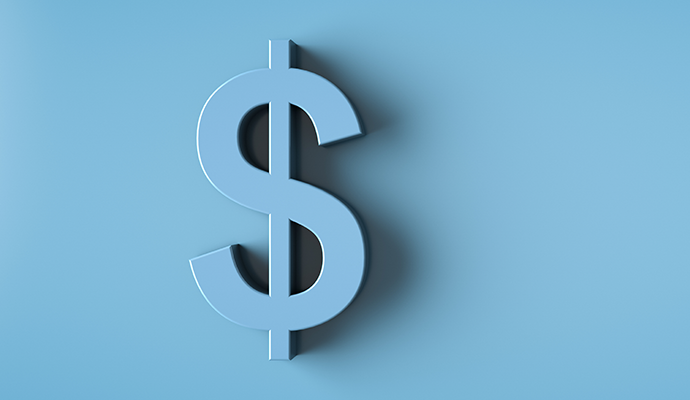How 2020 Healthcare Spending Trend Fits Within Decades of Growth
The 2020 coronavirus-driven healthcare spending spike certainly was an anomaly, but it also continued a decades-long upward trend.

Source: Getty Images
- While the nation’s overall healthcare spending trend has been gradually increasing starting in 1970, the US experienced a particularly steep healthcare spending incline in 2020 of nearly 10 percent growth, according to a chart collection from the Peterson-Kaiser Family Foundation (KFF) Health System Tracker.
The Peterson-KFF Health System Tracker included insurance administration, health research, and public and private spending when tracking healthcare expenditures.
“Most of the recent health spending growth is in insurance programs, both private and public,” the chart collection noted.
In 2020, private payer spending contributed more than a quarter of healthcare spending (27.9 percent). In contrast, in 1970, private payer expenditures made up 20.4 percent of overall expenditures. The share of public payer spending has nearly doubled from 22 percent in 1970 to 40.2 percent of overall expenditures in 2020.
In private insurance, in the twelve years between 2008 and 2020, per member spending rose by 47 percent. The authors attributed this to higher prices. Additionally, insurance and government administrative costs have been steadily increasing over the decades.
However, members are not necessarily seeing these increases reflected in their own costs. The average annual growth rate of spending per private insurance member grew 5.9 percent in the 1990s but only 2.8 percent in the 2010s.
Healthcare spending has been rising in other sectors as well.
From 1970 to 2000, national healthcare spending rose from $74.1 billion to $1.4 trillion, and in 2020 the nation spent $4.1 trillion on healthcare.
In one year alone—from 2019 to 2020—the healthcare spending trend grew by $365 billion. Compared to the 9.7 percent spike in spending that the nation witnessed that year, from 2018 to 2019, healthcare spending rose only 4.3 percent, which was considered an average annual increase for that decade.
Notably, nearly a third of all 2020 healthcare expenditures were tied to local, state, and federal spending (32.5 percent), contributing significantly to the surge. This makes sense given the massive nationwide efforts to combat the coronavirus pandemic throughout most of 2020, including spending on drug development and emergency funding.
Hospital spending was the second-highest expenditure in 2020, but federal coronavirus response efforts influenced even this category. Hospital expenditures encompassed federal loans and payments such as the Provider Relief Fund and Paycheck Protection Program.
Given that federal funding and public health spending seeped into many areas of healthcare during 2020, the real growth in spending outside of these two sources only reached 1.9 percent growth. The 864 percent increase in federal spending underscores the coronavirus pandemic's massive impact on the healthcare industry.
While 2020 healthcare spending saw a strong upward trend, it is also situated within a decades-long growth spurt. Per capita growth has always been lower than healthcare spending, starting in 1970, although the gap has narrowed and the growth shrank over time.
In the 1970s, the annual gross domestic product growth rate was 9.3 percent, and healthcare spending per capita growth was 12.0 percent. By the 2010s, the annual gross domestic product growth rate had dropped to 2.7 percent, and healthcare spending per capita growth was 4.1 percent.
In the 2010s, the annual spending growth rate for hospitals and providers or clinics was about the same—4.6 and 4.7 percent, respectively. Prescription spending was lower (3.2 percent). In the 1970s, the growth rates were much higher.
Also, the 2010s were the first decade since the 1970s in which prescription drug spending growth was lower than hospital and provider or clinic spending.
Hospital and provider or clinic spending combined contributed over half of the nation’s healthcare spending (51 percent) in 2020. Prescription drug spending made up eight percent of national healthcare spending that year.
Separate sources have found that 2021 did not continue the spending surge from 2020. Instead, the annual growth rate normalized to 3.4 percent.
